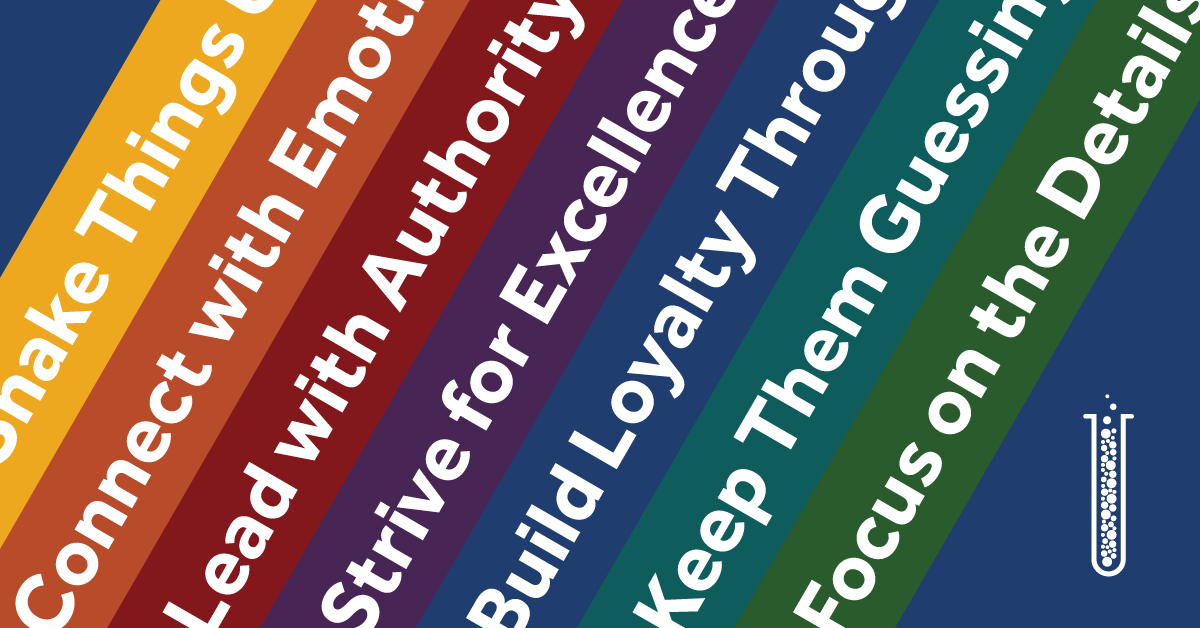Few things are so intimidating as the deadly silence of a tough client: their arms crossed, chins down, mouths set in a grim line, like a firing squad ready to kill your pitch.

Yet it doesn’t matter how great your product is… unless you can sell it.
You can make it out alive (and even make a sale!)… if you prepare yourself and your presentation in advance.
Note: When I say “tough sell,” I’m talking about any presentation in which the success or failure will depend on your ability to persuade and fascinate your listeners.
Below, your guide to confidently sell to the dreaded devil’s advocates and cynical naysayers.
1. Keep your eye on the ultimate goal of the meeting.
Before the meeting begins, figure out the single most important goal for this interaction. Are you really there to pitch an idea? Or are you there to initiate a relationship? If you only achieve one thing in the meeting… what is it?
Meetings are like many things in life… when you have a clear purpose, you’re more likely to be successful.
2. Don’t spend so much time on the materials in the presentation that you forget to prepare for the presentation itself.
Too many people spend a boatload of time on the material in the presentation, and very little time on the presentation itself. Thoughtlessly dumping your ideas into PowerPoint slides is like serving a carefully-prepared meal on cheap paper plates. You damage your chances of success.
3. Think of your customers concerns before they do.
Think through every possible concern, objection, or obstacle to selling that idea, and decide your point of view (collectively with your team, if applicable) so that you can have the most constructive possible discussion.
Spend more time thinking through how you’ll present your proposal than you’ll spend in the meeting itself. Talk through how to frame up the rationale in a way that addresses the customer’s main concerns. Consider starting the meeting by immediately addressing your customer’s objections.
4. Criticize your own proposal (before your customer does).
Ahead of the meeting, be brutally honest with yourself and your team in pinpointing the weak spots in your proposal. That way, you can address those if the client brings them up. Consider all aspects of your client needs, concerns, insecurities, politics, and biases that you’ll have to overcome in order to earn their genuine consideration.
The point isn’t to defensively fight for your work, but rather, to avoid being caught flat-footed by a tough question.
5. Tell the story behind your process.
Stories are incredibly effective¾ and you have a story behind how you developed your pitch itself. I use storytelling to describe what my team’s process was like, to humanize and bring the client inside the journey. For example: “When we first began this process, we looked at ideas in the area of X and Y, but soon realized that wouldn’t be smart for reasons A and B…. Then we hit upon this idea, and everyone was inspired by it.”
Properly done, this type of storytelling brings the audience into your thinking, so that your solution becomes a perfect, rational, brilliant execution of their needs.
6. Be able to explain every element of your recommendations.
Don’t send your ideas out alone and defenseless into the meeting. Be able to clearly explain every element of your work: Why you did things the way you did.
You didn’t develop your recommendations by randomly shooting darts at a spreadsheet, so make sure the client knows it.
7. Have “Plan B” ready if your original plan isn’t approved.
Decide in advance what elements of the work can you compromise on, and what you can’t, so that you can adjust your focus.
8. If the presentation starts sucking wind, don’t wait to find out what’s going wrong.
Instead of nervously pushing forward to make it out alive, try to rustle the pink elephant out of the bushes. Acknowledge the situation with a little diplomatic honesty… for instance, “I could be wrong, but I’m sensing that this isn’t working for you¾ at least that’s what it appears from those veins throbbing in your temples.”
(Okay, you can leave out that last part. But you get the idea.)
Only once they express their concerns can you then redirect attention to solving them.
Every day, we have to sell ourselves and our ideas ¾ whether that “selling” takes place on a Zoom call, in a conference room, or in a coworker’s cubicle. These presentations are the building blocks of our careers.
You want your message to be heard and remembered. You want to change someone’s opinion, or purchase choice.
You could have the world’s greatest product and still fail. Why? Because if you don’t succeed in fascinating your customer, your product will fail. (And if that happens on some level, you fail too.)
That’s how to turn a pitch into a sale.
And maybe even get the blessing of the devil’s advocate.










